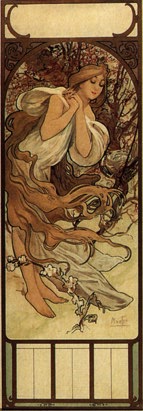
Monday, March 10, 2025
 Harris, Harris & Donahue Literary Agents |

So pass I hostel, hall, and grange; By bridge and ford, by park and pale, All-arm’d I ride, what e’er betide, Until I find the Holy Grail. Sir Galahad. Tennyson 1853 Research has shown that over 90% of us live without any sense or purpose. How terrible this must be! The rest, the élite, do search for meaning, purpose, and direction; they try to answer the key questions: Why are we here? What should we do? Where are we going? This searching and seeking amounts to the pursuit of the Holy Grail of Understanding and Fulfilment. Without this search we wither and die spiritually, in our Selves, as life becomes flat and stale, even if it is financially profitable, and the life-giving Imagination within us atrophies. These matters are indispensable for thinking people; let us consider them in some detail. Many pursue the holy grail of their own particular calling, from designers and manufacturers of cars to the medical profession looking for the elusive Elixir of youth. But, the highest search concerns the Spirit; its nature is communicated to us through the Myths. The dictionary calls a myth, ‘a story about superhuman beings’, gods and goddesses and their relations with men and women, like Zeus, supreme god, and his attractive, well-shaped daughter Aphrodite, Goddess of Love and Beauty. Bronislaw Malinowski is a scientist who has made an extensive and empirical study of myths, as in his Myth in Primitive Psychology (1926). In this he wrote: The Myth… in its original form, is not a mere tale told but a reality lived. It is not in the nature of an invention such as we read in our novels today… [but] the assertion of an original, greater and more important reality through which the present life, fate and work of mankind are governed. Myths do not explain; they reveal. If we do not practise what we preach, we cannot see or understand these revelations concerning, ultimately, the Creator. As Joseph Campbell writes in The Power of Myth (1989), ‘Myths are infinite in their revelations.’ If all goes well, as we grow older and more experienced, we see more and more of their meanings, becoming increasingly confident and assured as a consequence. We must acknowledge that just as fundamental as the drives to find food and a mate are basic spiritual drives. In the Introduction to A Science of Mythology (1951), by Carl Jung and C. Kerenyi, we read, ‘… it seems as if there already were in the human plasm… something spiritual, a compulsion towards the spiritual.’ Then we read, ‘What grows out of this compulsion is… exposed to its environment – and woe to anything that wants to grow when there is nothing in the environment to correspond with it.’ This has been the trouble with the 20th century, particularly in its second half. In 1948, T.S. Eliot wrote in his Notes Towards the Definition of Culture: 'I see no reason why the decay of culture should not proceed much further, and why we may not even anticipate a period, of some duration, which will have no culture. The culture will have to grow again from the soil'… Our whole way of life has been mechanised, gradually turning the heart into stone since the brutalising Industrial Revolution. Carl Jung wrote that ‘We have lost our immediate feeling for the great realities of the spirit…’ So the American novelist Thomas Wolfe, in Of Time and The River (1935), could write about ‘…an America that has been lost in the savage roar of its machinery, the brutal stupefaction of its days, the huge disease of its furious, ever-quickening and incurable unrest, its flood-tide horror of gray, driven faces, starved brutal eyes and dull dead flesh.’ This is the consequence, for millions, of Wordsworth’s ‘getting and spending’ in the Consumer Society. So the pursuit of the Holy Grail is not so easy. But, fortunately, there is another side to all this such as the Welfare State and altruism and where there is a will there is a way. A society which is unable to respond to its people’s spiritual dream or myth becomes sick; it is unable to heal itself. We have been this in the 20th century; we were this in the 12th century when the all-powerful Church of Rome was oppressive and blatantly corrupt. Today, on p.21 of The Daily Telegraph for the 15th July 1999, in an article by Bruce Johnston in Rome, we find the headline, Corruption ‘Rife in Vatican’. Under this we read, ‘An Italian prelate who was co-author of a book about alleged sex, power and cronyism inside the Vatican said yesterday that Satan had “entered the Church”.’ So it is vital, in our search for the Truth which is life, to think for ourselves. But the 12th Century saw also a spiritual resurgence matched at the end of the 20th century by a religious revival for the 21st century. This does not involve institutional religion so much. What people want to hear today is what imaginative scientists think about religion based on their magnificent, landmark discoveries about the Universe and our place within it. In the 12th century, Crusaders to the Holy Land brought back a host of new ideas from the Saracens “infidels” whose culture seemed so much more wonderful, civilised and more enticing than their own, to challenge men’s minds and prise off the stifling grip of the Church, in a great release. Now, we have Women’s Liberation and a slow but steady increase in the acknowledgement of women at work; in the 12th century women were given a new place, power and authority throughout the sophisticated courts of Europe. These courts, with the famous Code of Courtly Love, were created by such as the enlightened and highly ambitious Queen Eleanor of Aquitaine, wife of the great Henry ll (1133-89) of England, and her daughter Maria de Champagne who helped Chrétien de Troyes create many of the chief stories of the Holy Grail, the new Romances. These Courts placed women on pedestals and helped to civilise cruel and barbaric warriors, to make the recognise and do some justice to the feminine, beauty, and restraint, to implement law and order, instead of just looting, pillaging and raping. Out of all this, emerged from the mists a legend superior to all other previous myths in the West. This all-transcendent myth was that of The Holy Grail. It featured a near godlike King Arthur in 6th century Britain, later he was complete with his knights in shining armour on horseback engaged in a lifesaving quest to find a very special mystical object. In the process they did, of course, help damsels in distress. This object became a chalice or cup reputed eventually to be that used by Jesus at the Last Supper. The finding of this led to Transformation. It still does. Between 1190 and 1220, stories poured out about this myth concerning the sacred and the secular. They swept through the cultivated and lavish courts of the Kings and Queens of Europe in the greatest of Adventures, past, present and future. These stories started in Ireland with the Celts. They deal with visits by mortals to the homes of immortals, with ancient and magical myths of Renewal and Regeneration. The Celts stressed how Kings should behave, their responsibility for the health or sickness of their kingdoms. Sovereignty is seen by the Celts as an immortal goddess. If the relationship between men and this immortal Goddess is bad, we will have T.S. Eliot’s Waste Land. The hero must ask the right questions and then answer them to re-establish a good relationship with her to let the water flow again to refertilise this Waste Land as scientists are doing today. Then came Christian Myths of Salvation and Redemption. In these, the Hero or Knight seeks his Maker and tries to make Earth like Heaven, not polluting it or permitting Global Warming. Then we have the myths of alchemy, anticipating Science, and Rebirth. Also, some are about Transformation of the individual at the end of a successful Quest as in Jung’s Individuation. This is fully explained in the Depth Psychology of Erich Neumann in The Origins and History of Consciousness (1970). In these stories, Nature is seen as spiritual, anticipating Wordsworth, Coleridge and the 19th century, while leading us to Love and Compassion. These are truly civilising influences, especially in an age of Big Business, and through enlightened Government based on solvency, leading to social and spiritual harmony instead of soccer hooliganism, vandalism and inner city riots. So these myths, spread also by wandering storytellers and bards, are of the greatest interest and significance, in fact, vital. Before the decline, Arthur was the model of chivalry, ie. The manners which are the morals which are the happiness of the genuine and sincere. His reign was indeed that Golden Age for which we all long and hope that, one day, Evolution will achieve. These stories were partly prose, partly verse dealing with the old Celtic legends of the Irish, Welsh, and Bretons. We regard Arthur as a national hero but much of this literature is not English. The 12th and 13th centuries were the peak of their popularity, the peak also of Norman French influence. We chose Arthur, not an Anglo-Saxon, although he was the chief of defeated Britons. This Arthur was great and truly heroic, defended by brave men and supernatural powers – rather like Winston Churchill surrounded by his aircrews with the “gremlins”! King Arthur led a marvellous life culminating in a great and tragic death. Mort D’Arthur Then spake King Arthur to Sir Bedivere: The sequel of today unsolders all The goodliest fellowship of famous knights Whereof this world knows record… …I think we Shall never more… Delight our souls with talk of knightly deeds Walking about the gardens and halls Of Camelot… Tennyson 1853 He may have had historical origins in a Roman, Arturius, who lived in Britain in the 2nd century. This King Arthur was popularised by Geoffrey of Monmouth (c.1100-1154); he welded the many legends into a convincing whole, Romance, fostering chivalric ideals which are something more than only the theoretical basis of our civilisation. He did this just when Anglicised Normans were ready to acknowledge and accept a British Hero. The five chief stories are: 1. The History of the Holy Grail. 2. The History of Merlin, a power behind King Arthur’s throne. 3. Lancelot. 4. The Quest of The Holy Grail. 5. The Death of King Arthur. The story of Lancelot concerns the strengths and weaknesses of chivalry. Lancelot has that fatal flaw: he loves and yields to his love for Guinevere, Arthur’s Queen. This has devastating consequences leading to the downfall of Arthur’s kingdom and the Round Table. It is Galahad alone who succeeds. He is the only one strong enough to fulfil his proper Destiny. The Grail cannot be gained by anyone, only by those who seek the meaning of life, satisfying our primordial wish and instinct to know our place in the universal scheme of things. Later, Arthur’s failure to take the initiative in the Quest, instead, leaving this to his knights, is seen as a failure of will and of his sovereignty. This failure turns his kingdom into a Waste Land, which only the finding of the Grail can cure. If we succeed in our Quest, we achieve the highest state of being known to us here, shared between Prince and Princess. This is Transfiguration; it is that of an apotheosis like Hemingway in The Old Man and The Sea. (1952). The most important thing about this, according to Erich Neumann (p.149) is the ‘birth of a higher mode of personality’. This is followed by the next stage of our Evolution. The Quest for The Holy Grail, embodying principles of conduct illustrated by King Arthur and the Knights of the Round Table at Camelot, during his Golden Age, is a lighthouse for all who take life seriously and want to win Understanding and Salvation, embodying fulfilment and happiness. As Joseph Campbell writes in The Power of Myth (p.197), ‘The Grail represents the fulfilment of the highest spiritual potentialities of the human consciousness.’ The search for it leads to that wisdom which is the finest power of all as it grants Eternal Life, and Love. Without these, life becomes what John Bunyan called, in his well-named book The Pilgrim’s Progress (1678), the Slough of Despond with its despair and degradation, instead of the élan of fervent growth. Thus the Quest for the Holy Grail, which Malcolm Godwin called ‘the greatest of all spiritual endeavours’, is the best Quest of all. Christianity for The Future ‘Religion without science is blind. Science without religion is lame.’ Albert Einstein 1879-1955 Don anew Arthur’s sword Excalibur! The quest must be undertaken by knights So bold – the Grail pursued, the princess won. The Saviour’s redemption within us all Is confirmed in new vision’s magic thrall. If science leads the way, we all walk tall. The straight and narrow path stretches ahead. New purpose found gives strength to overcome. The fog of mental doubt is now dispelled. We can conquer Calvary to achieve Understanding’s sunshine which banishes The dark of discord and denial’s spite. The devil’s kith and kin will soon take fright. Arming with religious truth so bright, Science grants again our noble birthright, Echoing down the years that which is right, A song forever joined with love’s great might. The End
|
||||||||||||||||



